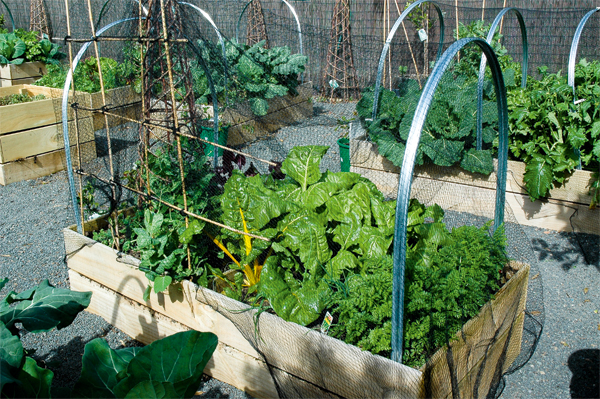Imagine never having to dig your garden again!
It seems an odd concept when a spade is one of the most important gardening tools we own. But it’s an idea that Australian gardener Esther Deans revolutionised in the late 1970s, in her quest to garden on pure, impenetrable clay.
As she grew to understand and improve on the process, she became a worldwide authority on “no-dig gardening” and gardening methods for those with special needs. Her books are still highly sought after by gardeners.
What is a no-dig garden?
Essentially, a no-dig garden (AKA “lasagne garden”) comprises layers of varying organic matter piled up inside a large box. The box can be constructed from any material normally used to build a raised garden – timber, railway sleepers, bricks etc.
It’s designed to sit on top of soil or lawn but, with the addition of a base layer of rubble for drainage, could feasibly be placed on top of a concrete pad. No-dig beds can be made to suit any shape or length, but should be no wider than one arm length if placed against a fence or wall, or two arm lengths if freestanding. This allows the entire area to be accessed without walking on the garden, thus preventing soil compaction, which is detrimental to worm activity and healthy plant growth.**
How does it work?**
The layers of a no-dig garden are similar to those of an efficient, fast-working compost heap. Using such a varied range of organic materials creates high nutrient levels and there should be very few weed seeds. Whereas traditional digging drags weed seeds to the surface, displaces available nutrients and forces good organic matter deeper down, the no-dig method buries weed seeds and retains all the organic matter and resulting nutrients in the plant’s root zone.
Worms and other microbial creatures are naturally drawn to the organic matter, breaking it down and aerating the soil as they tunnel through. Soil structure is much healthier and heavy mulching both retains moisture and slows the percolation of water, thereby preventing fast leaching of soil nutrients. It’s also believed the undisturbed environment of a no-dig garden is less susceptible to pests and disease, because it allows the build up of a more balanced population of both beneficial soil insects and fungi.
Benefits of a no-dig garden
Apart from the obvious benefit of not having to dig over the soil, no-dig gardens are easy to build, can be built to any size and shape almost anywhere and are virtually maintenance free. They work in unison with nature and don’t rely on any chemical intervention, making them suitable for organic gardeners.
No-dig gardens are also equally suited to a small city plot or large country garden; can be built high enough to incorporate seating for those with bad backs and other disabilities; maintain higher soil temperatures than ground soil, which extends the planting season at both ends; and are easily covered with frost cloth or netting for plant protection.
The greatest benefit is that you can create a healthy, productive vege garden, even on the poorest soil.
Building the layers of a no-dig garden
50cm layer of rubble – only required on poorly drained soils
50cm layer of overlapping newspaper (don’t use glossy paper or cardboard)
Layer of lucerne hay (in the thickness it peels off the bale)
Sprinkling of blood and bone or 20 to 30cm layer of well-rotted animal manure
20cm layer of loose straw
Sprinkling of blood and bone or 20 to 30cm layer of well-rotted animal manure
10 to 20cm-deep layer of compost (or a mix of compost and planting mix or garden loam). Repeat steps 7 to 12 as necessary to fill the beds.




